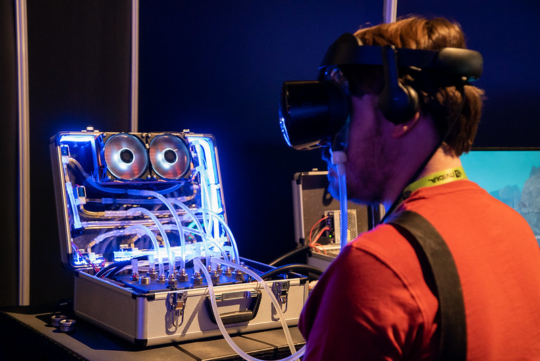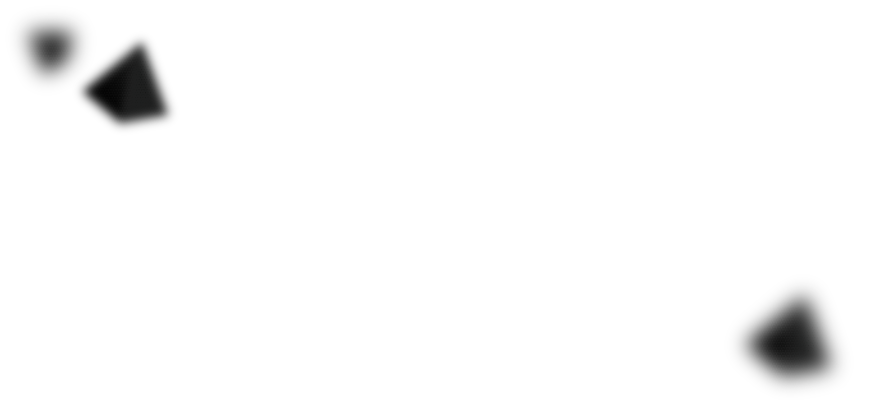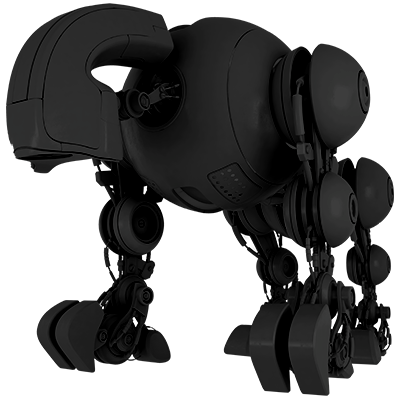Future-focused Tech
Emerging Technologies
Focused on the future? In Emerging Technologies, catch the most innovative tech designed to power us forward.




“SIGGRAPH 2021 Emerging Technologies shows that despite the pandemic, significant advances were made in interactive techniques and graphics. In fact, many projects were inspired by the desire to connect people who could not be physically together. Along with video presentations that we started last year, projects now have short technical papers, so there are even more ways to explore!”
Paul Dietz
SIGGRAPH 2021 Emerging Technologies Chair
How to Submit
SIGGRAPH 2021 will move forward at this time as a virtual-only event. We look forward to celebrating 48 years of advancements in computer graphics and interactive techniques in our virtual venue. We are excited you are submitting your work for consideration. As we finalize our conference plans, visit the About the Conference page for the latest updates.
Log into the submission portal, go to the “Make a New Submission” tab, and select “Emerging Technologies/Labs.” In the “Presentation Format.”
You will be asked for:
- Four-Page Paper
This is a document that describes your emerging technology in significant detail and provides compelling evidence that the project achieved its goals. Here is a well-formatted example. Your paper should include a discussion of your goals, prior work, novelty of your work, technical implementation details, and supporting evidence of project success. - Presentation Format
To submit an Emerging Technologies submission, please select “Emerging Technologies/Labs” as your presentation format. To see the information you need to submit, view the Sample Submission Form. All Emerging Technologies, Immersive Pavilion, and Labs submissions will be juried together, and the jury will determine which program the presentation best fits within. - Representative Image and Summary
Please include a 50-word description of your submission that we can use in promotional materials if your work is accepted, as well as an image that illustrates an important aspect of your project. See Representative Image Guidelines. You may supply up to six images if they will help clarify your submission. - Representative Video
Each submission should include a polished video that explains the significance of your submission in a concise manner. See the Evaluation tab for details on how to make a compelling video. Videos must be uploaded at 720 p (1280 × 720), using either MPEG-4, AAC, or H.264 encoding and should not exceed 200 MB. Maximum duration is three minutes. Please take time to light and shoot your video as carefully as possible, because we might use excerpts of it in the official Emerging Technologies preview video trailer, which will encourage participants to see all of Emerging Technologies. - Date of Completion
When you submit your work, it should be complete. Please include your expected date of completion if your work is currently unfinished. Please note that your work should be complete enough to fully demonstrate its success and give us the confidence that it will be ready to show.
Other important submission information:
- Non-native English speakers are highly encouraged to use the English Review Service to improve the text of submissions. Please note this process takes time. For the best chance of having your submission reviewed by the English Review Service, please ensure that you complete your submission at least 14 days before the deadline.
- For more information about uploading files for your submission, please see the Submission FAQ.
- Educator’s Resources Submission: Those submitting content to a SIGGRAPH conference can indicate interest in donating materials of value to the education community on the ACM SIGGRAPH Education Committee website. Learn more.
Evaluation
After your work is submitted, it is reviewed by a panel of experts of varying backgrounds. Each look at the five criteria (concept; novelty; interest; quality, craft and completeness) elaborated upon below and review independently before meeting to discuss their evaluations and make recommendations to the final selection committee.
The summary text most likely will be the jury’s introduction to your work, followed by the representative video. Initial interest will come from a compelling demonstration. Jurors have this in mind as they evaluate the work and watch your video, so it should show how you plan to demonstrate the technology. Jurors also will read your four-page paper for additional details, including how your project is different from and extends beyond previous work and details how you’ve achieved your goals. Any questions not fully answered by the video should be addressed with your written materials and representative images.
Concept
How exceptional are the ideas, problems, solutions, aesthetics, etc., presented in this submission? How coherently does the submission convey its overall concept? Is the concept similar to existing ones, or does it stand out? This criterion is particularly applicable to submissions that put together existing technologies into a single product. Submissions of this type, where the individual technologies are not necessarily new but their combination is, are evaluated on both the final product and how well-proposed technologies integrate to meet the desired goals. Many submissions in this area are rejected because they do what existing systems do, and they do not demonstrate that the proposed approach leads to better results.
Novelty
How new and fresh is this work? Has this work been previously published and/or publicly demonstrated? Is it a new, groundbreaking approach to an old problem, or is it an existing approach with a new twist? You must first demonstrate to the jury that your work is sufficiently different from existing approaches. Second, you should evaluate your work in the context of other approaches where appropriate. Is it faster? Easier to use? Does it give better results? Is it more accurate? Many submissions are rejected either because the work is too similar to existing work or because the submission materials did not convince the jury that the improvements were substantial enough.
Interest
Will conference participants want to see this? Will it inspire them? Are the results or approach appealing to a broad audience? This is partly a measure of how broad the potential audience is and the overall clarity and novelty of the submission. A submission in a very niche area is more likely to be accepted if the results are exceptionally better than what exists already or if the proposed solution might be applicable to other areas. Suggesting additional applications of your technology potentially may widen participant interest. Finally, the more interesting your actual hands-on demonstration is, the more excited participants will be to see your work. Be clear about how you want to show your work.
Quality, Craft, and Completeness
This is a measure of how well written the submission is and the quality of the supporting materials. The submission must effectively communicate both the problem and the solution in enough detail and clarity that the jury can evaluate it. You also must convince the jury that your solution works. Many submissions are rejected because, although the problem and solution seemed interesting, the materials did not convince the jury that the solution actually had been implemented and evaluated. Some are rejected because the jury is left guessing when the submission includes unanswered questions, gaps in research, insufficient explanations, or does not demonstrate convincing results.
Non-Disclosure Agreements
SIGGRAPH reviewers cannot sign non-disclosure agreements for submissions. For information on patents and confidentiality see the Submission FAQ.
Upon Acceptance
You will be notified of acceptance or rejection around early May.
Upon acceptance, the submission portal will allow you to update basic information about your work and upload any final materials for inclusion in the conference program and website. You will receive information about how to submit final versions of your accepted work and the deadlines for final updates.
If your installation is accepted, you also must prepare and submit a revised four-page paper for inclusion in the ACM Digital Library (four pages maximum). This abstract must be submitted by 28 May 2021. Please prepare your submission using these templates and instructions. If we do not receive your revised abstract by 28 May, you will not be allowed to present at SIGGRAPH 2021.
You will also receive an email from “rightsreview@acm.org” with a link to your work’s rights form within 72 hours of notification of acceptance of your work to the conference. When your rights form has been delivered to ACM, you will then receive an email from “tapsadmin@aptaracorp.awsapps.com” with information about the preparation and delivery of your material to TAPS for publication.
Please make sure that emails from “rightsreview@acm.org” and “tapsadmin@aptaracorp.awsapps.com” are part of the “allow list” in your email program, so that you do not miss these email messages.
The source (Word or LaTeX) of your abstract, as well as any supplemental materials, must be delivered to TAPS, ACM’s new article production system. TAPS will generate the PDF and HTML5 versions of your abstract for publication in the ACM Digital Library.
You must deliver your material to TAPS, resolve any formatting issues identified by TAPS or by the proceedings production editor, and approve your material for publication by 28 May 2021. If you cannot meet that deadline, you will not be allowed to present your material at SIGGRAPH 2021.
Information about the preparation and delivery of your final material to TAPS also can be found at https://homes.cs.washington.edu/~spencer/taps/taps.html.
Once accepted, the chair will contact the submitter to arrange a time and place for a demonstration to one or more local SIGGRAPH representatives. These demonstrations must be completed by 4 June. If health concerns make this infeasible, submitters must work with the chair to provide a suitable alternative.
If your installation is accepted, you must:
- Prepare and submit a revised, four-page paper to TAPS by 28 May 2021. (required)
- Update your auxiliary images and video. (optional)
- Work with the chair to arrange a local demonstration for the SIGGRAPH representative by 4 June 2021. (required)
- Prepare a 15-minute pre-recorded video. (required) Final accepted video presentations will be published in the ACM Digital Library. Further details and instructions regarding the video specs will be provided upon acceptance.
- Present your work during SIGGRAPH 2021. (required) Plan for one contributor to be present for the entirety of the virtual session for their presentation.
Presenter Recognition
To present your work at SIGGRAPH 2021, at least one contributor per submission must register at the appropriate registration level. All other contributors can register at the level of their choice.
You can find a link to the contributor recognition policy here.
ACM Rights Management Form
If your work is accepted for presentation at SIGGRAPH 2021, you must complete the ACM Rights Management Form. The form will be sent to all submitters whose work is accepted.
Your representative image and text may be used for promotional purposes. Several SIGGRAPH 2021 programs — Art Gallery, Art Papers, Real-Time Live!, Technical Papers, and all installation programs — will prepare preview videos for pre-conference promotion of accepted content, which may include a portion of the video you submitted for review. You may grant or deny us the ability to use the representative image and submitted video for these purposes.
Timeline
23 February 2021, 22:00 UTC/GMT
Submission form deadline
Early May 2021
Acceptance or rejection notices are sent to all submitters.
10 May 2021
Deadline to make any changes to materials (i.e., approved title changes, presenter names, descriptions) for publication on the website for accepted contributors.
28 May 2021
Final four-page paper due. If we do not receive your revised paper by 28 May, you will not be allowed to present at SIGGRAPH 2021.
4 June 2021
All demonstrations to SIGGRAPH representatives must be completed by this date.
Summer 2021
SIGGRAPH 2021

